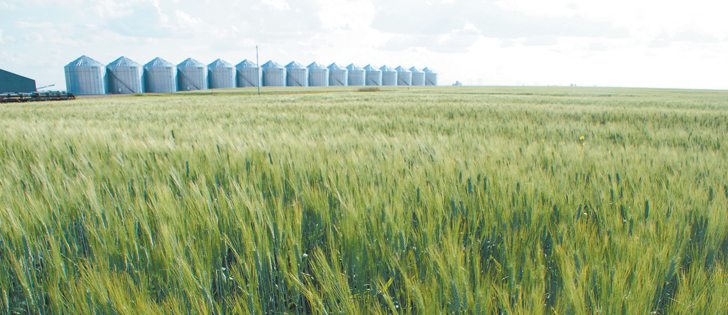What should you move, price and hedge – and when?
That’s what some farmers think about every early harvest season, especially if they have big bills due soon and haven’t forward-priced and arranged delivery for enough to cover them.
Often at this time of year the state of a farmer’s crop is pretty well understood, so the biggest worry is that wet weather or frost will damage the quality that’s already there, waiting to be combined. Those are concerns this year as well, but farmers have the additional vexation of often having no clue what’s really inside that mass of drying vegetation they are busily chewing through. Many crops are such a question mark, after unending rains caused huge anxiety over disease for every crop. Soybeans seem to have held up well. Many lentil crops got smashed to pieces. Wheat and canola seem to be mixed bags. We’ll have to wait well into harvest to get a truer sense of what’s really there. For thousands of farmers, there is no baseline to base current expectations upon.
Read Also

Proactive approach best bet with looming catastrophes
The Pan-Canadian Action Plan on African swine fever has been developed to avoid the worst case scenario — a total loss ofmarket access.
Each farmer has his own challenges, but the pricing and movement questions are doubly challenging because the overall size of most crops is such an unknown. Recently Statistics Canada provided a low-ball estimate for canola production of 17 million tonnes, which is much below the 18 million tonnes many were expecting. Yet the weather got worse since the StatsCan estimate was calculated. Lots and lots of wheat appears to be coming. But the protein levels and quality are complete wild cards right now. About the best thing we know is that China is not going to crimp canola shipments, at least for a few months, after Prime Minister Justin Trudeau managed to bag a temporary reprieve to the country’s desire to slap tough dockage standards on Canadian canola. For a few months that shouldn’t be a factor in the markets as Canada begins clearing the 2015-16 crop.
There are no easy answers for anybody right now, so we’ll just have to wait and see. That’s what lots of analysts and advisers are doing too, as they crunch the numbers and try to figure out strategies for growers. I recently met with Brian Voth of Prairie Farm Consulting to bounce some of these questions about canola off of him, and this is what he told me.

















